Sao Francisco Church and Stock Exchange Palace
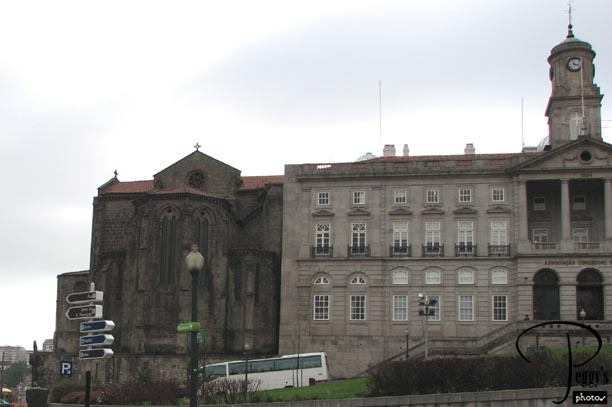
We had a whole day and night in Porto (also known as Oporto). We started out with a morning tour of Porto with a local guide named Fatima. Our first stop was the Sao Francisco Church––on the left of the photo––and afterward, the Stock Exchange Palace––on the right of the photo.

Sao Francisco Church and Stock Exchange Palace
Sao Francisco Church
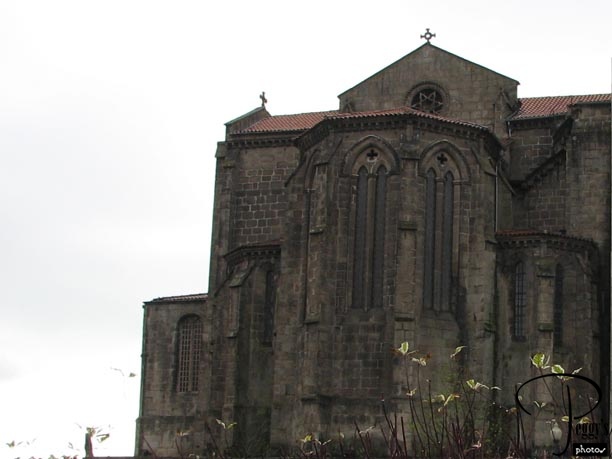
This church was started in 1245, reconstructed in 1383, that completed in 1410, and then reconstructed in 1425. It is the only church in Porto built in the Gothic style. It no longer serves as a church but now is a museum.

Sao Francisco Church
Sao Francisco Church
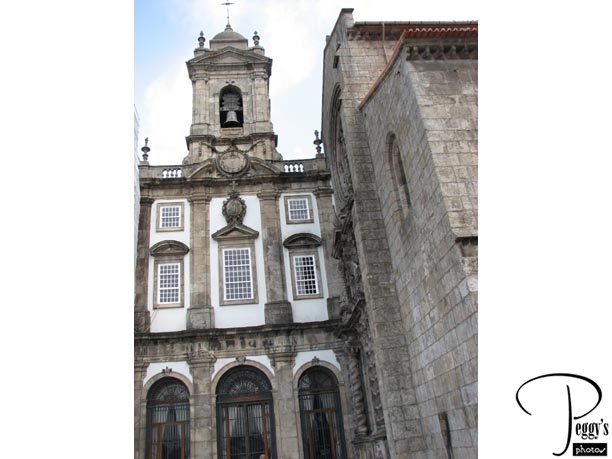
The area of the church to the left of the photo is now under renovation and is under a screen. However, what could be seen is quite impressive.

Sao Francisco Church
Sao Francisco Church
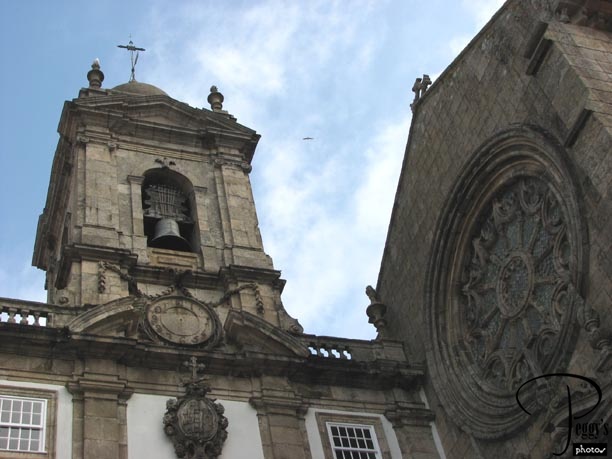
Closer–up of the bell tower and the rose window.

Sao Francisco Church
Sao Francisco Church
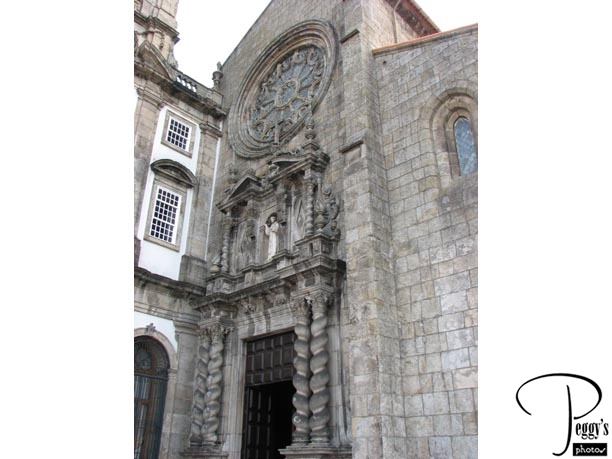
Another view.

Sao Francisco Church
Sao Francisco Church
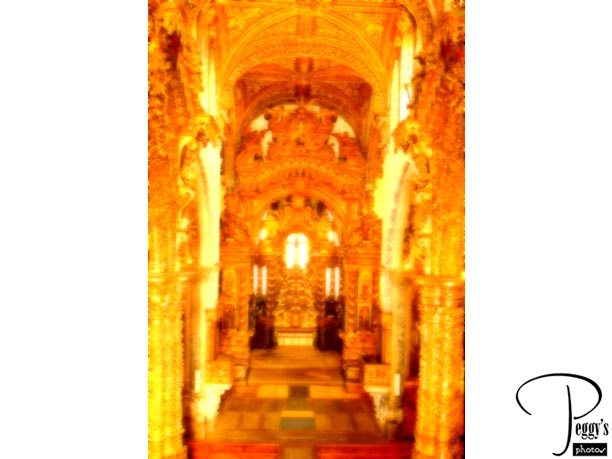
No photos were allowed inside the church. The picture here I scanned from a postcard of the inside of the church. There is easily a huge king’s ramson of gold on its walls.

Sao Francisco Church
Sao Francisco Church
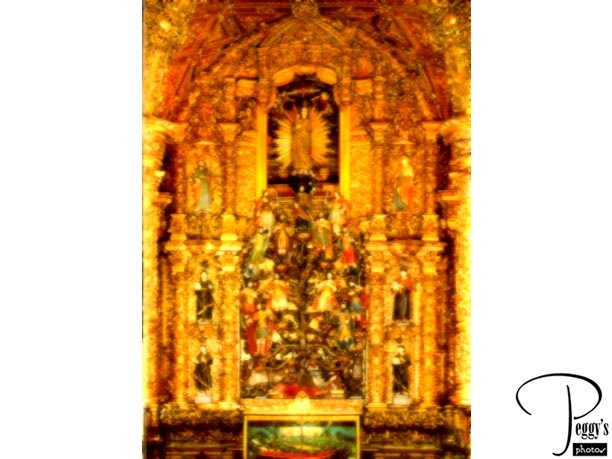
I very much wished photos were allowed as this postcard shows not too well the very impressive Tree of Jesse, carved in wood and showing the 12 figures of Judah. Also, at the bottom of the tree is the interesting figure of St. Mary of Good Voyages, the patron saint of navigation.

Sao Francisco Church
Sao Francisco Church
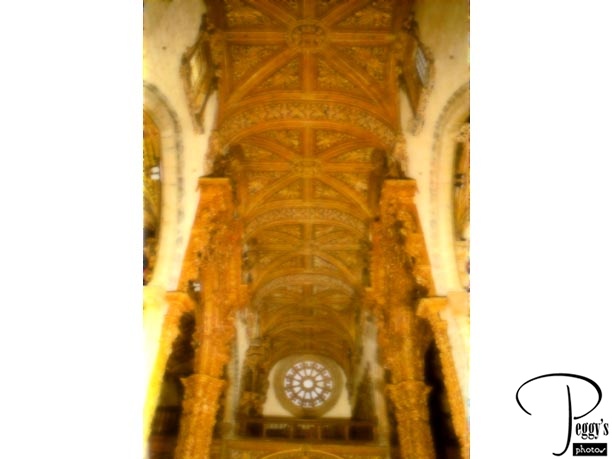
The ceiling of the church.

Sao Francisco Church
Another Church
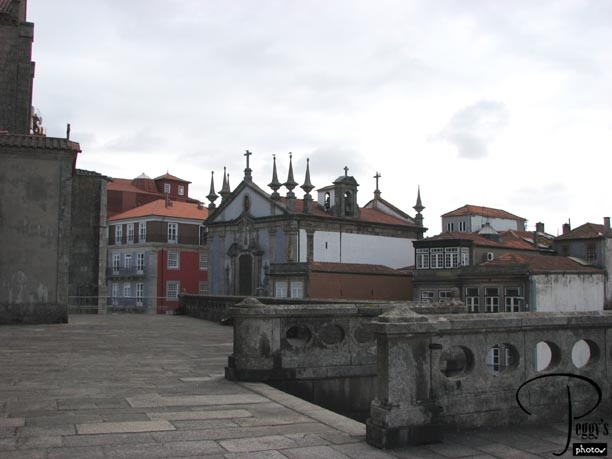
Another church seen from the Sao Francisco Church.

Another Church
From the Wall of the Sao Francisco Church
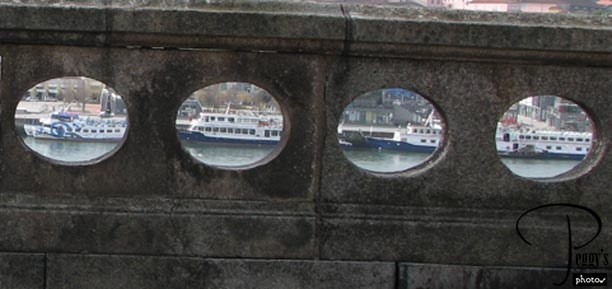
Boats on the River Duoro seen from round openings in the wall in front of the Sao Francisco Church.

From the Wall of the Sao Francisco Church
Another Church
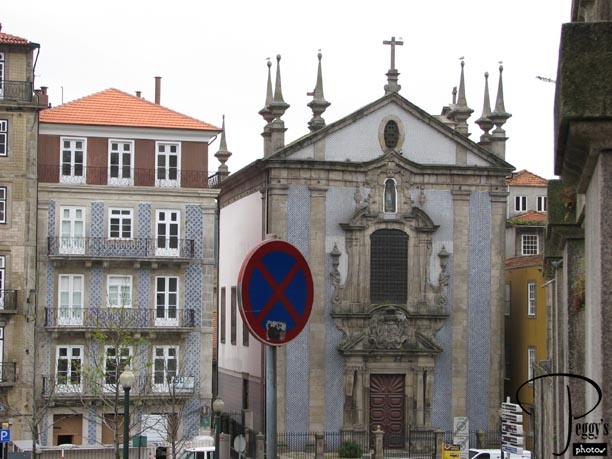
Another view of the other church.

Another Church
Stock Exchange Palace
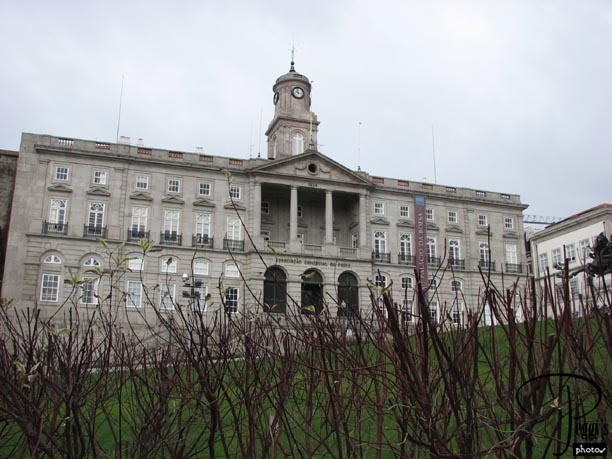
The Stock Exchange Palace (Palacio da Bolsa), which is no longer a stock exchange. In 1832, the Sao Francisco monastery burned down. The queen offered the property it was on to the Commercial Association, which decided to build a magnificent structure to show off the talents of its craftsmen.

Stock Exchange Palace
Stock Exchange Palace
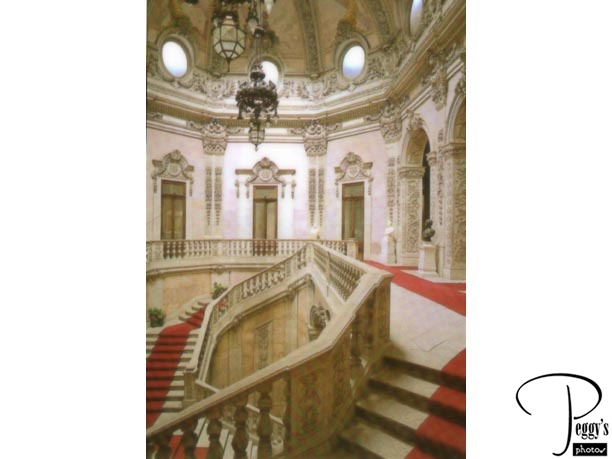
The interior of the Stock Exchange Palace is truly magnificent. Again, we were not allowed to take photos. I scanned this postcard of its grand staircase.

Stock Exchange Palace
Stock Exchange Palace
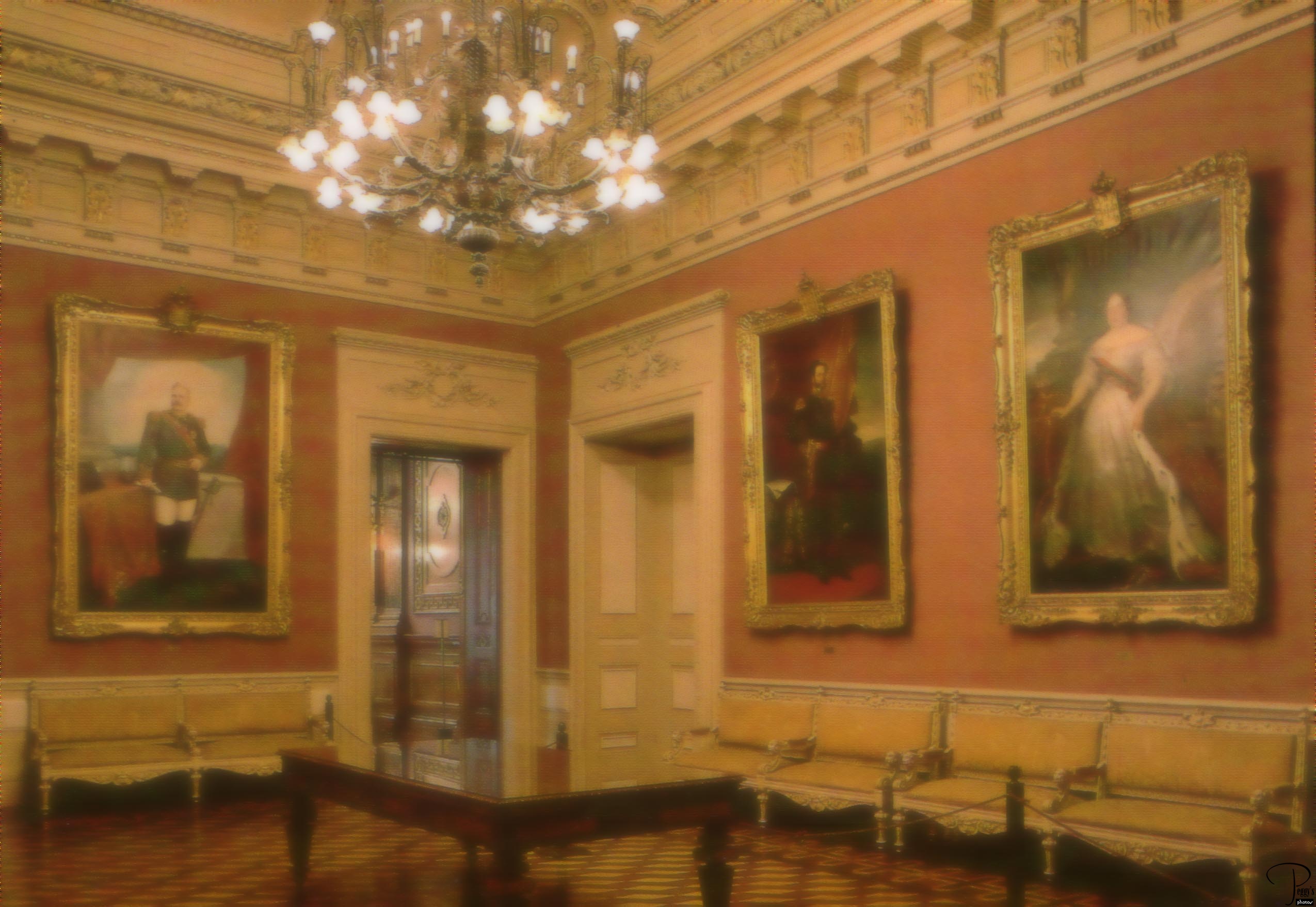
One of its rooms. The rooms of the exchange had intricately designed Brazilian wood floors.

Stock Exchange Palace
Stock Exchange Palace
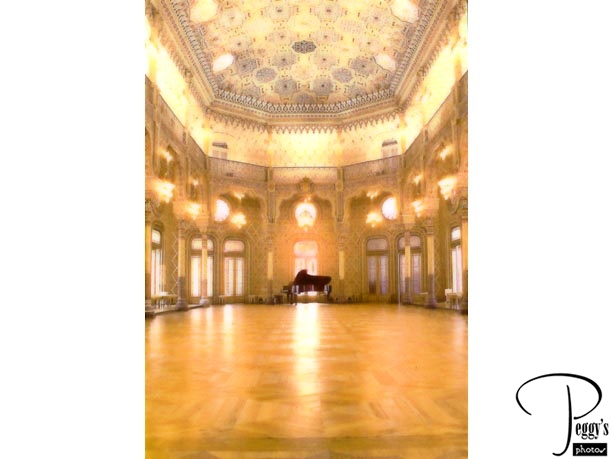
The Arabian Room. This was one of the most beautiful rooms I have ever seen and the postcard sold of it is extremely disappointing. Its actual colors, tiles, gold leaf, etc., were awe–inspiring.

Stock Exchange Palace
Praca Infante Dom Henrique
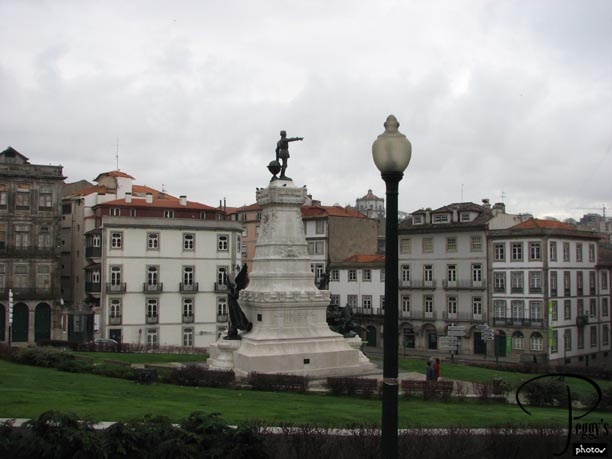
The Praca Infante Dom Henrique (Henry the Navigator Square) taken from the Stock Exchange Palace.

Praca Infante Dom Henrique
Praca Infante Dom Henrique
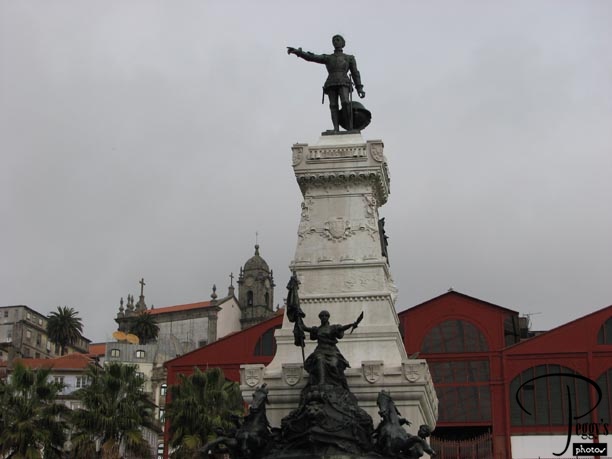
Closer–up view of the statue.

Praca Infante Dom Henrique
Walking Down to the Ribiera Embankment
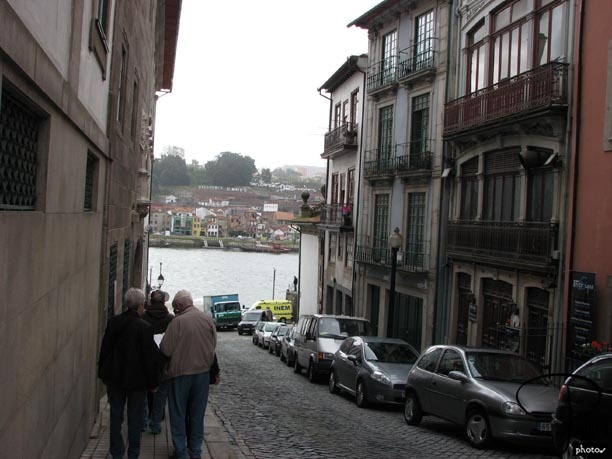
From the Stock Exchange Palace, we walked a short way down to the Ribiera Embankment on the River Duoro.

Walking Down to the Ribiera Embankment
Ribiera Embankment
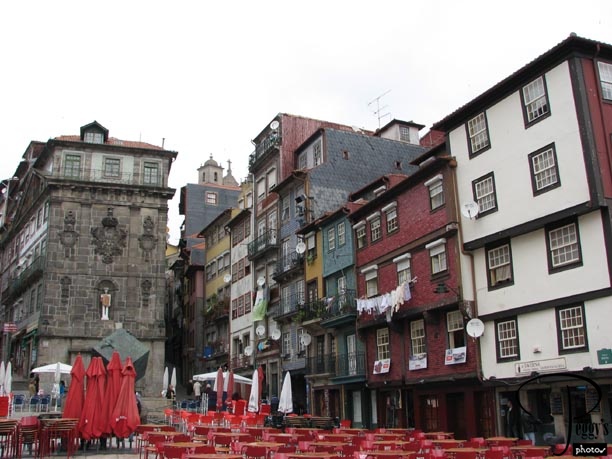
A square on the Ribiera Embankment. Note the statue in the middle of the building on the left.

Ribiera Embankment
Ribiera Embankment
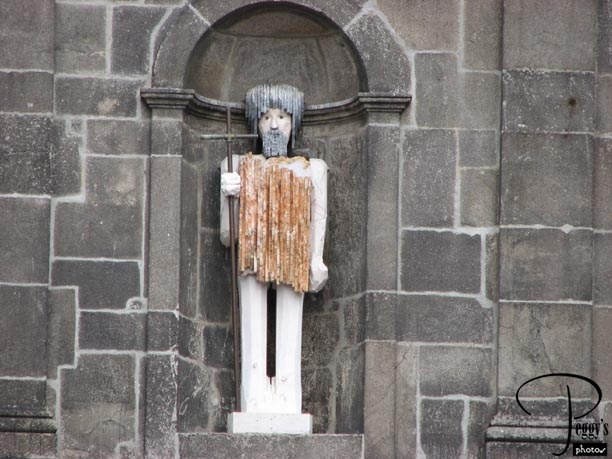
I haven’t any idea of who this is of, but it is very different and very cute.

Ribiera Embankment
Ribiera Embankment
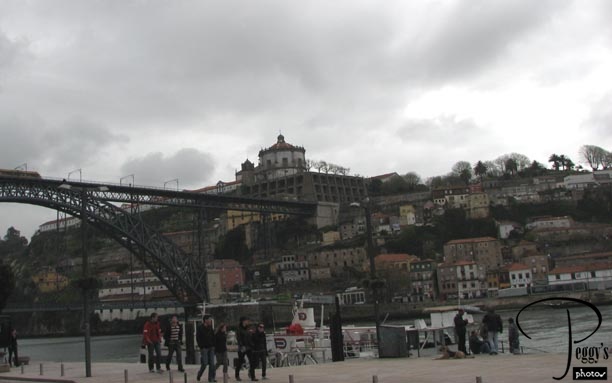
Looking at the other side of the River Duoro and the Ponte de Dom Luis.

Ribiera Embankment
Ribiera Embankment
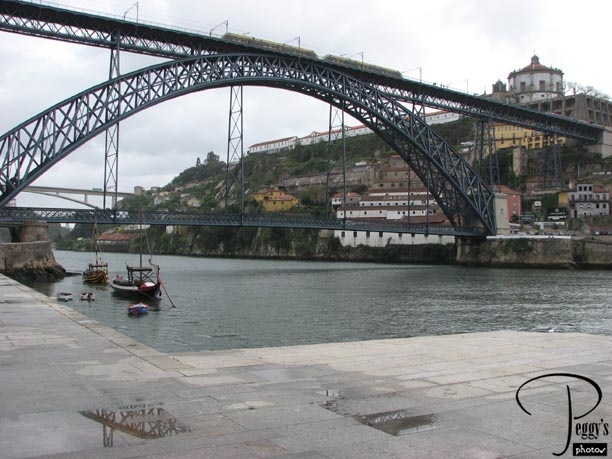
Wider view of the Ponte de Dom Luis I which was built in 1886 by an assistant of Gustave Eiffel. The boats on the left are old port barrel boats, left here for atmosphere.

Ribiera Embankment
Ribiera Embankment
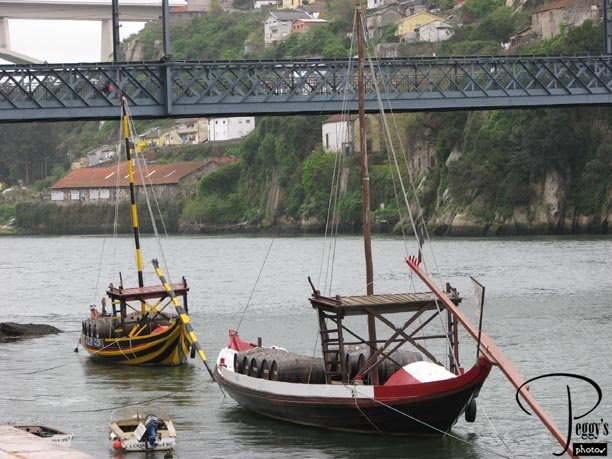
These boats were used to transport port down the River Duoro to the port wine cellars in Porto.

Ribiera Embankment
Ribiera Embankment
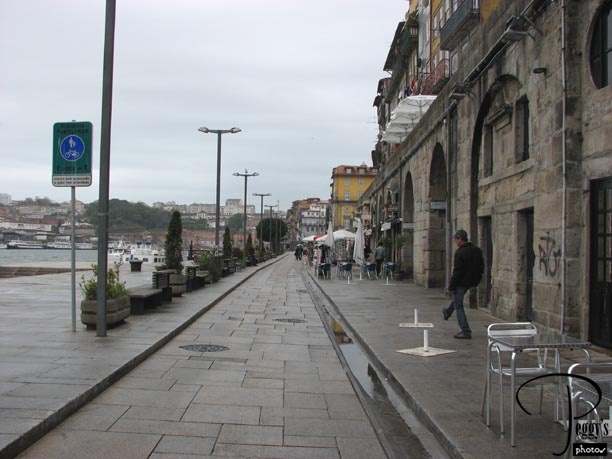
Photo of the embankment in the other direction. Here there are many restaurants and souvenir stores.

Ribiera Embankment
Ribiera Embankment
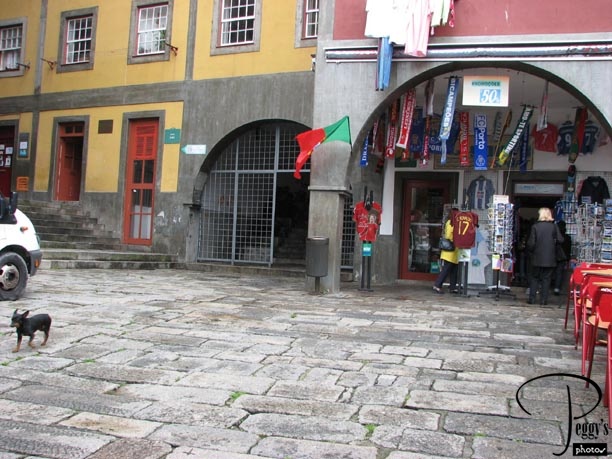
The souvenir store we were taken to, located behind the main street.

Ribiera Embankment
Ribiera Embankment
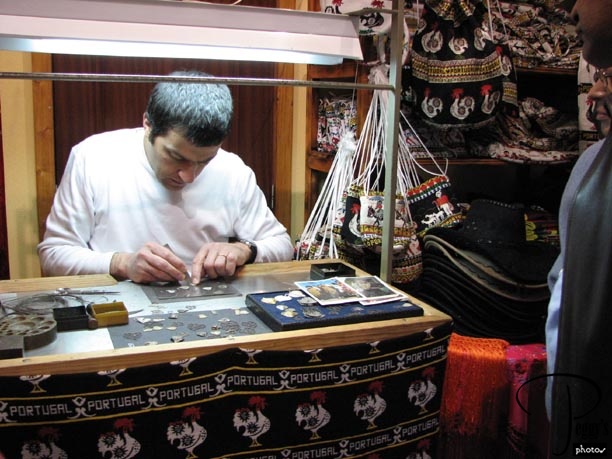
A man demonstrating the making of filigree jewelry.

Ribiera Embankment
Ribiera Embankment
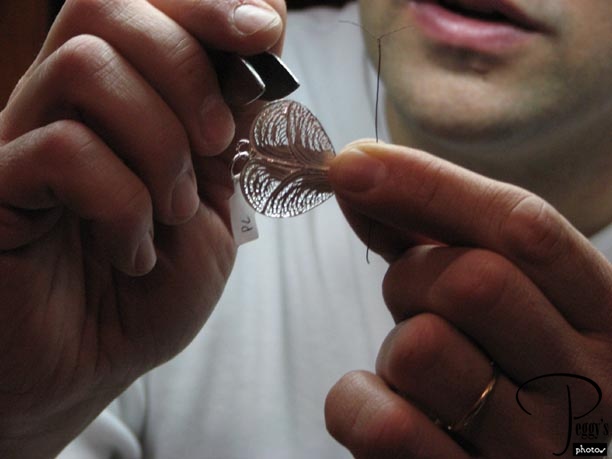
Slow, detailed work.

Ribiera Embankment
Ribiera Embankment
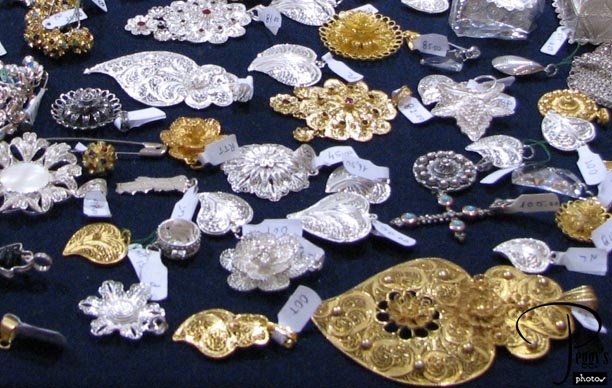
Some finished filigree jewelry.

Ribiera Embankment
Ribiera Embankment
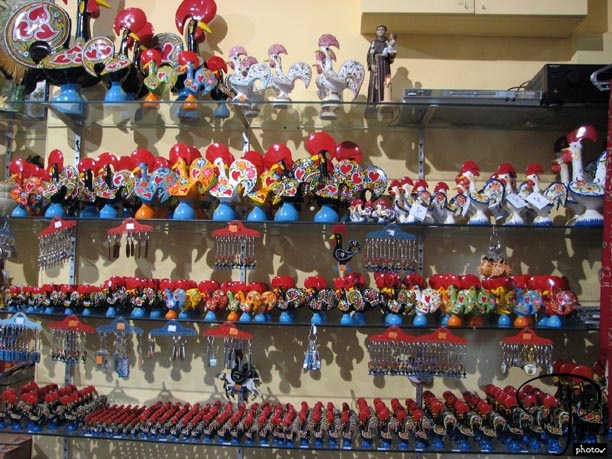
Many roosters for sale here.

Ribiera Embankment
Ribiera Embankment
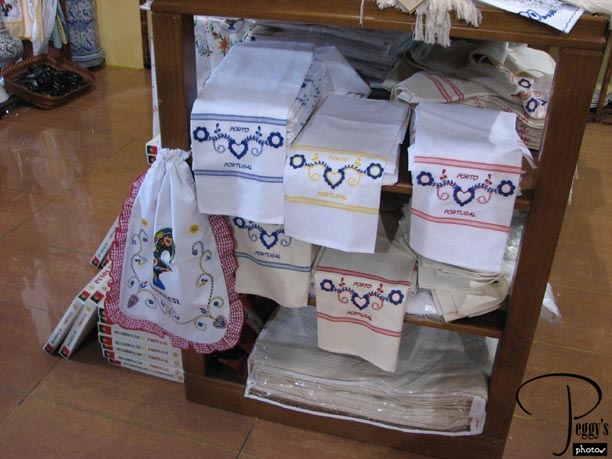
Souvenir dish towels, one with a rooster on it.

Ribiera Embankment
Ribiera Embankment
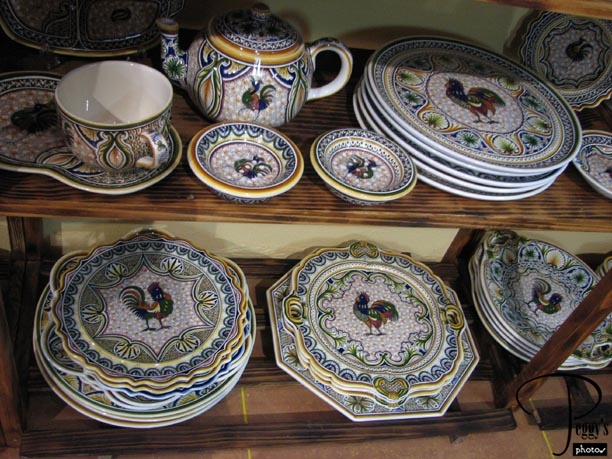
Rooster dinnerware.

Ribiera Embankment
Ribiera Embankment
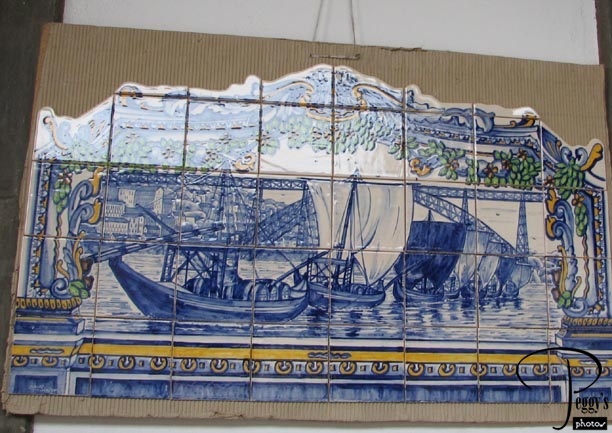
Beautiful tile mural for sale.

Ribiera Embankment
Ribiera Embankment
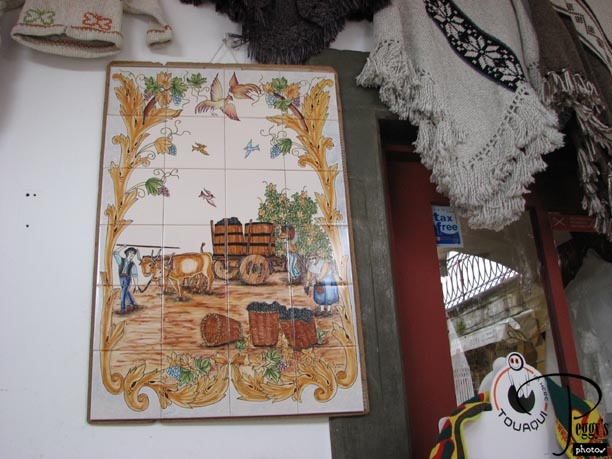
Another one.

Ribiera Embankment
Ribiera Embankment
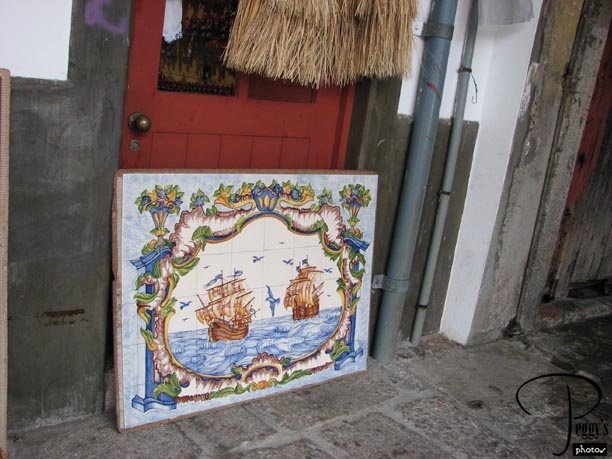
This tile mural I priced out of curiosity––about 250 euros.

Ribiera Embankment
Ribiera Embankment
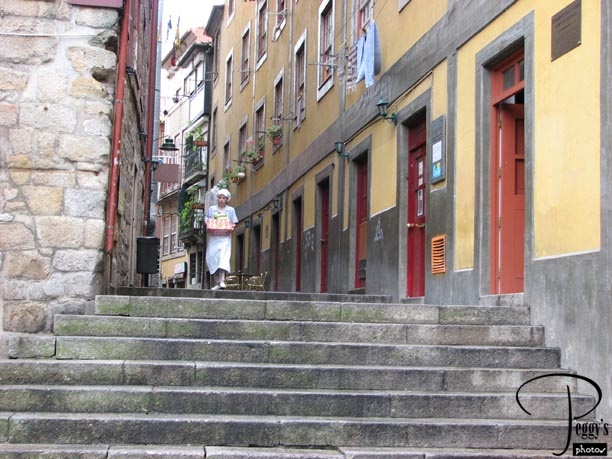
Bringing the pastries.

Ribiera Embankment
Ribiera Embankment
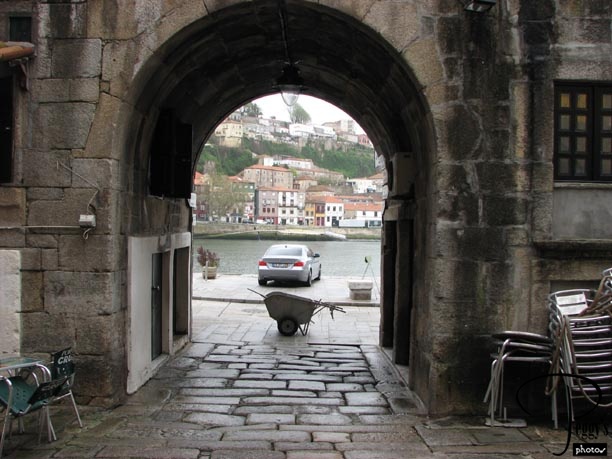
View of the River Duoro from the souvenir store through an arch.

Ribiera Embankment
Ribiera Embankment
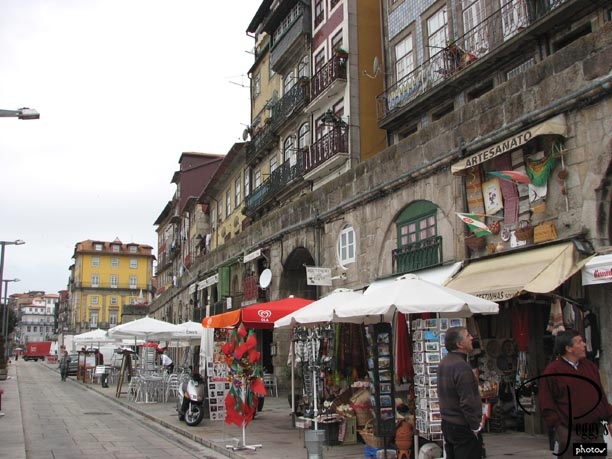
More of the Ribiera District.

Ribiera Embankment
Ribiera Embankment
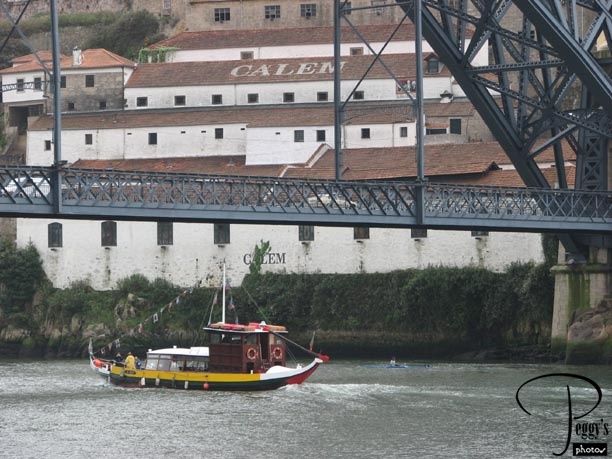
One of the tour boats, called rabelos, on the River Duoro.

Ribiera Embankment
Ribiera Embankment
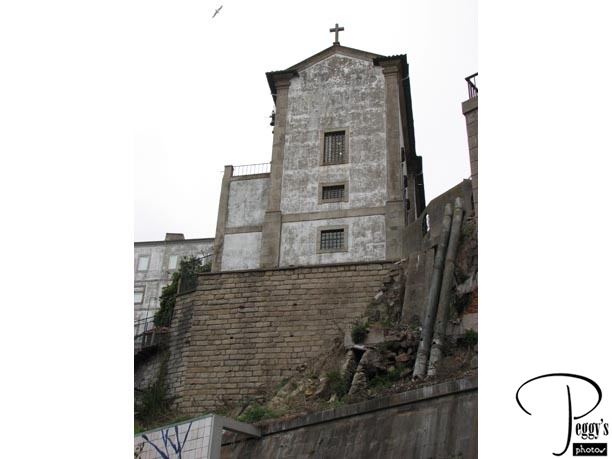
A church on the riverbank.

Ribiera Embankment
Ribiera Embankment
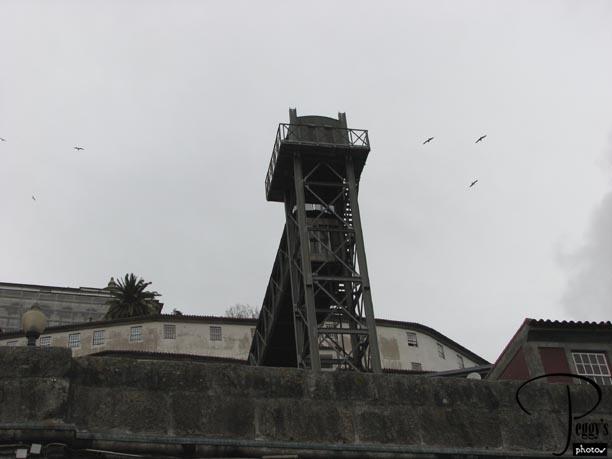
The Elevador dos Guindais which connects the Ribiera District to the hill above it. I did not see it operating.

Ribiera Embankment
Ribiera Embankment
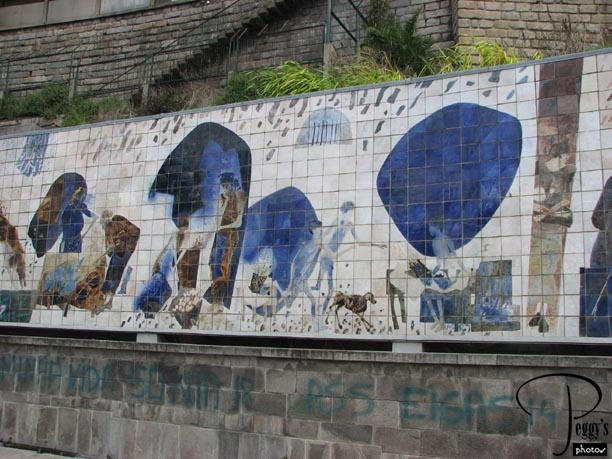
Murals along the side of the road from the riverbank.

Ribiera Embankment
Ribiera Embankment
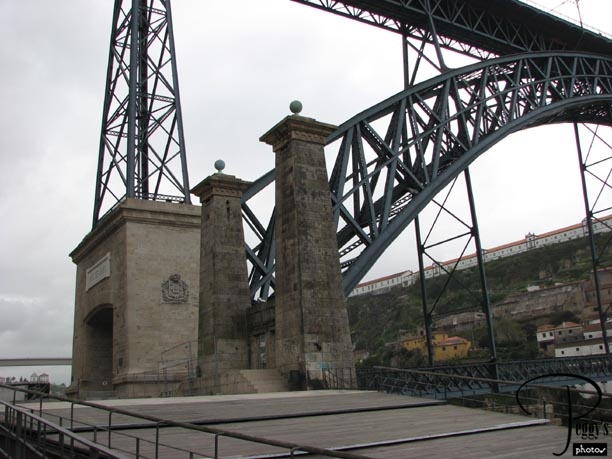
Starting to go across the Ponte Dom Luis I bridge (via our tour bus) to the other side of the river.

Ribiera Embankment
Vila Nova de Gaia
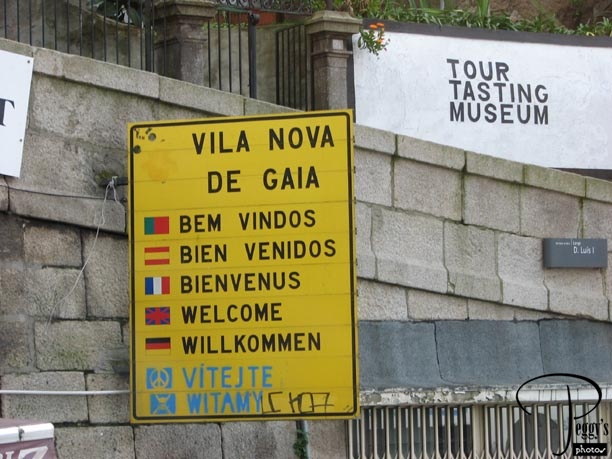
Across the River Duoro from the Ribiera Embankment is the town of Vila Nova de Gaia. A welcome sign: “Vitejte” I think is Czech, and “Witamy,” Polish.

Vila Nova de Gaia
Sandeman
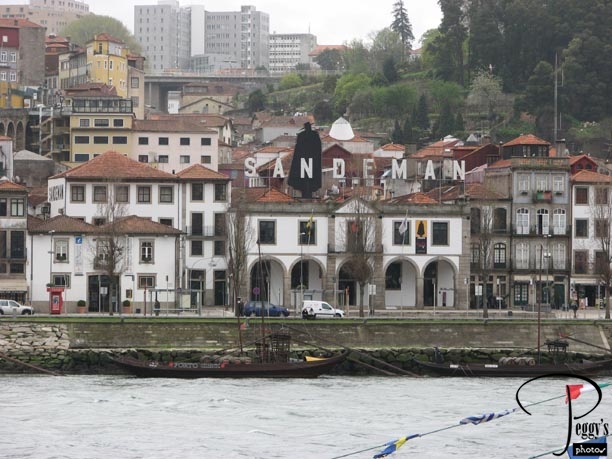
Our next stop was a visit to the Sandeman port wine cellar in Vila Nova de Gaia.

Sandeman
Sandeman
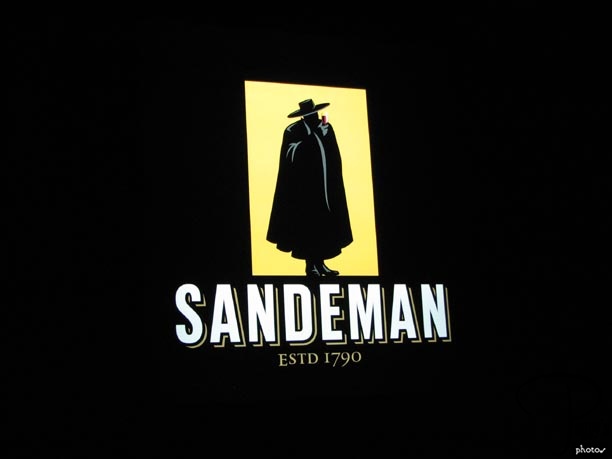
The Sandeman logo: the black cloak represents a Portuguese student’s cloak and the hat is that worn by Spanish horsemen, which represents the sherry that Sandeman makes in Spain.

Sandeman
Sandeman
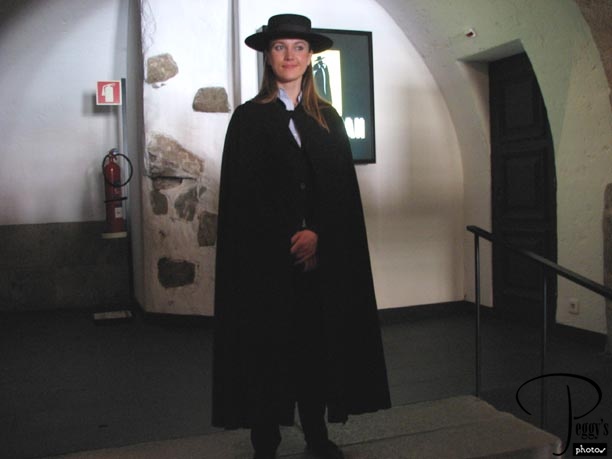
Our Sandeman guide.

Sandeman
Sandeman
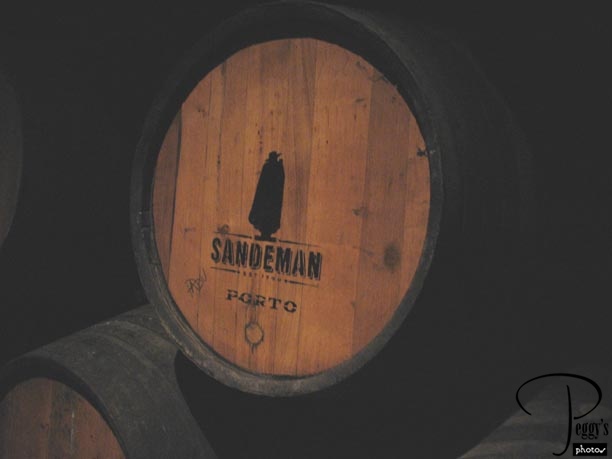
One of the barrels storing port. Port is classified as a medium–sweet wine with a 20% alcohol content. It is fortified 4 to 1 with brandy, the brandy stopping fermentation. Port is aged from two to over 100 years, with tawny port (with a brownish color) aging usually 10, 20, 30, or 40 years. However, aged port is mixed with port of younger years. A ruby port is aged 3 years. A vintage port is from one vintage year and is ruby in color. A white port (my favorite) is a young port.

Sandeman
Sandeman
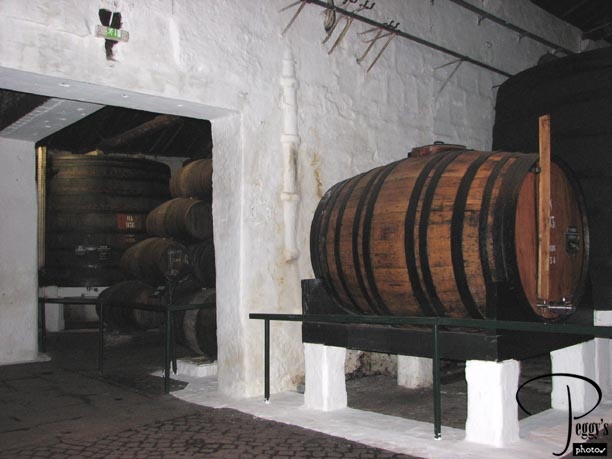
More port aging, some in extremely large barrels.

Sandeman
Sandeman
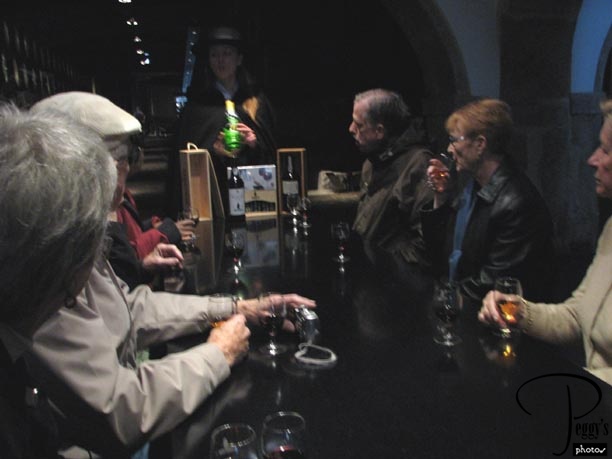
We were given both white and tawny port to taste.

Sandeman
Sandeman
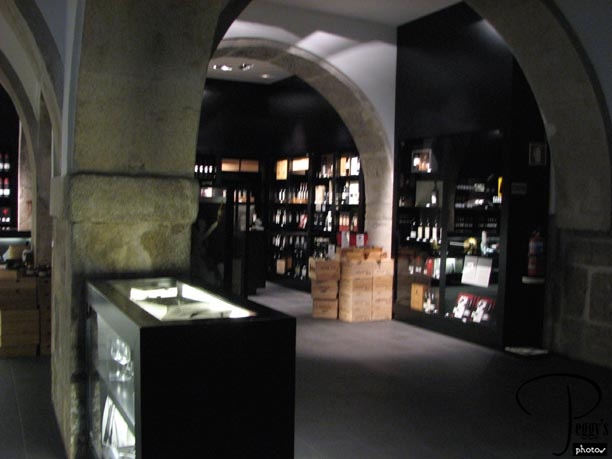
Of course, all this was to buy something from the Sandeman store here. I had a request from one of my sons to buy him 40–year–old port––this I found to be priced at 123 euros. So I bought instead three bottles of 20–year–old port, one for each of my sons, at a much lower cost. HOWEVER, after lugging these three bottles around for the rest of my trip in a collaspible carry–on and wrecking the carry–on’s wheels because of the weight of the bottles and then having to buy a new carry–on, when I got home, I found out that I could have bought the exact same Sandeman 20–year–old port for quite a bit less in the U.S. than in Porto––and that is to the extent that if the U.S. dollar and the euro were even in value it still would have been cheaper in the U.S. Oh well!

Sandeman
Porto
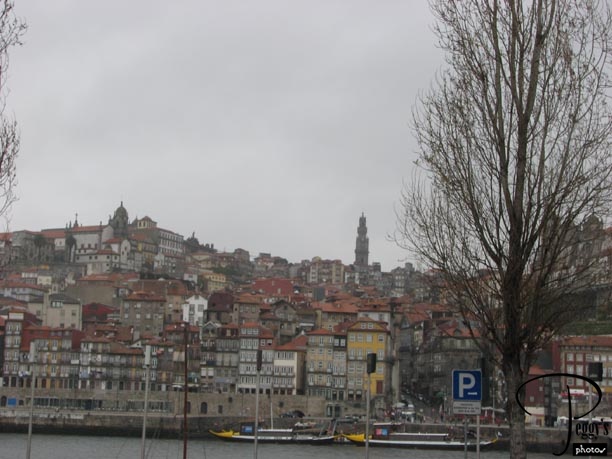
View across the River Duoro from Vila Nova de Gaia.

Porto
Porto
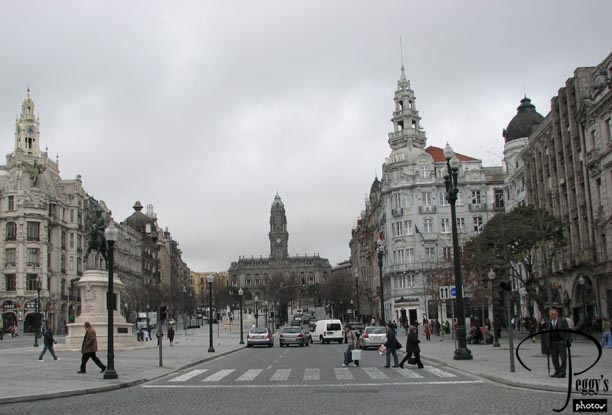
We next took a short bus tour of Porto. Photo: The beautiful Praca da Liberdade. The town hall is at the top of the square. The square is a commercial business center.

Porto
Porto
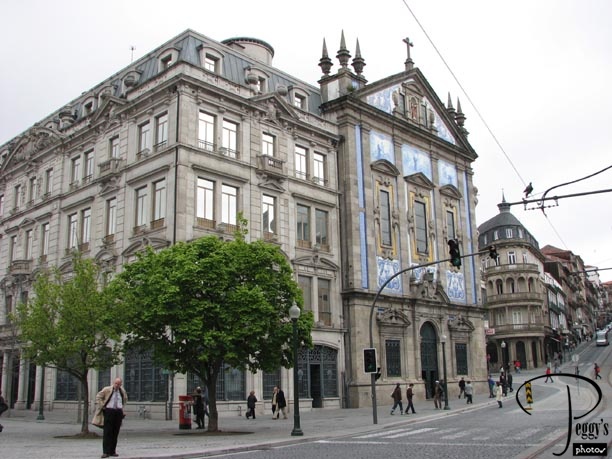
A church on the square.

Porto
Porto
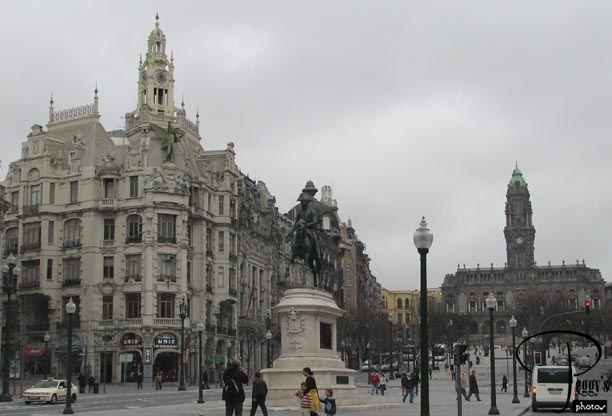
Statue of Dom Pedro, hero of the 1832 Civil War, in front of the town hall.

Porto
Porto
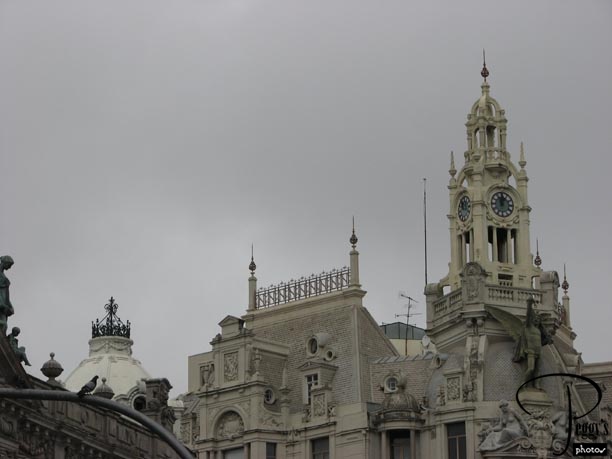
Close up of the top of the building on the left of the last photo.

Porto
Porto
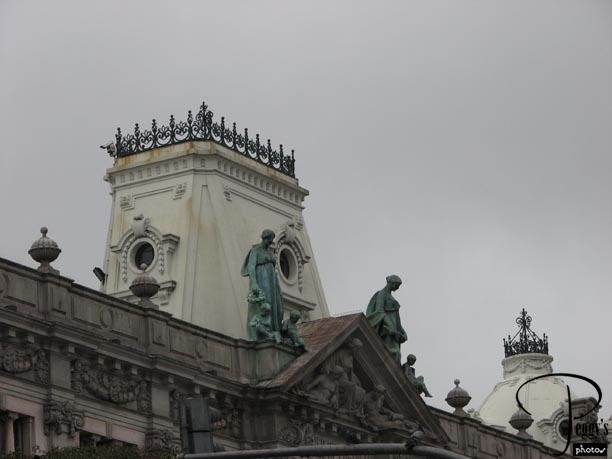
Another close–up.

Porto
Porto
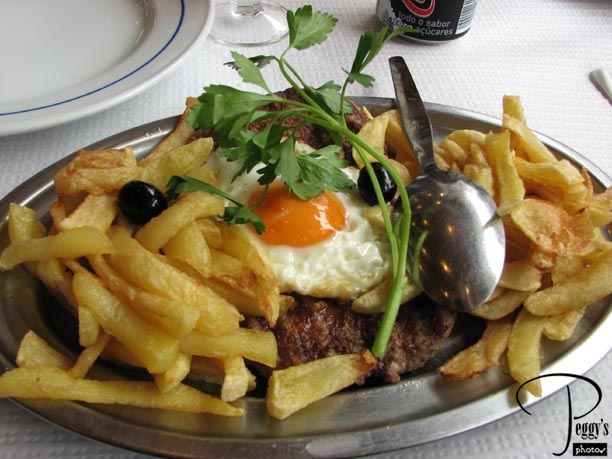
We were taken back to our hotel. Time for lunch. I saw Murial and Bill, two of my tourmates, at the cafe across from our hotel and they invited me to join them. I ordered a hamburger, which came as two large hamburger patties topped with a fried egg. Actually, very good. With coffee, 6,90 euros.

Porto
Porto
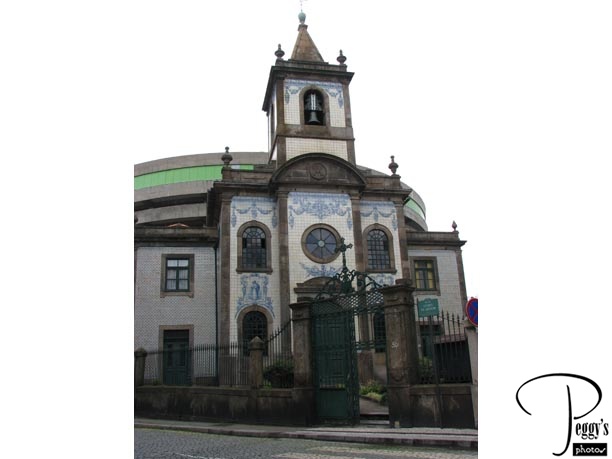
Muriel and Bill were going to walk around. I was going to see the city on the hop–on hop–off bus that stopped in front of our hotel. We were a very independent tour group and went off in different directions during our free time. Before going on the bus, I took this photo of a church right across from our hotel.

Porto
Porto
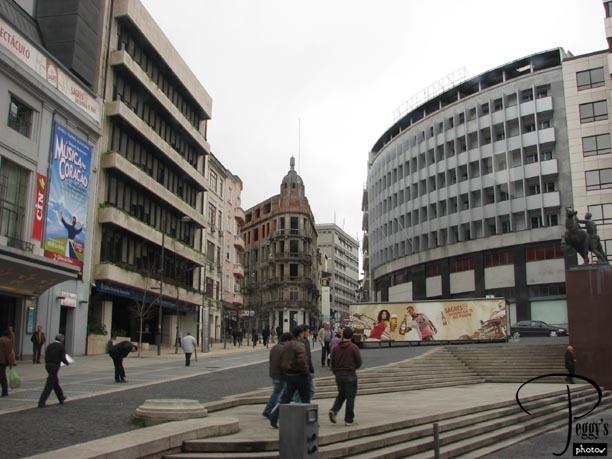
On the hop–on hop–off bus: The old and the new. The Sound of Music was now playing at the Musicano Coracao.

Porto
Porto
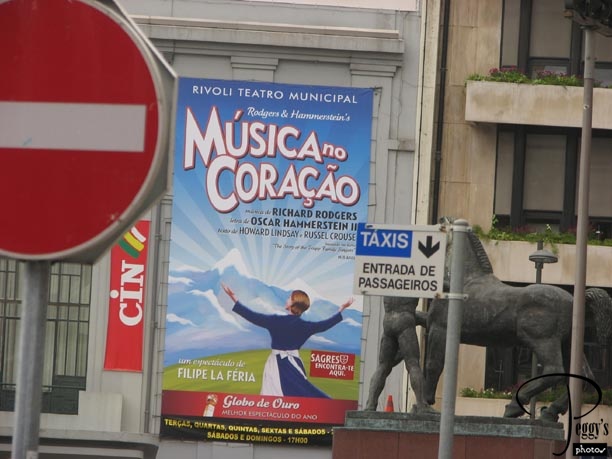
Billboard for the Sound of Music.

Porto
Porto
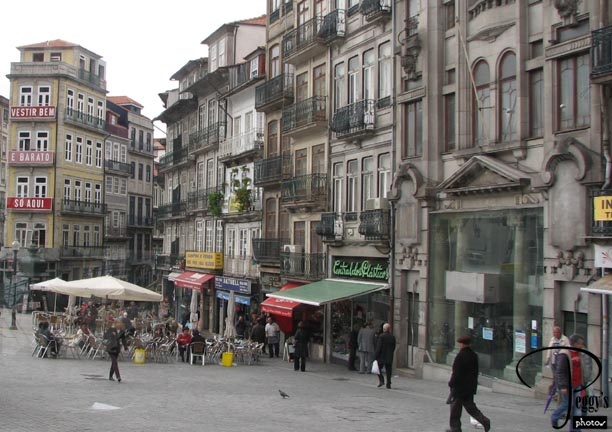
City scene.

Porto
Porto
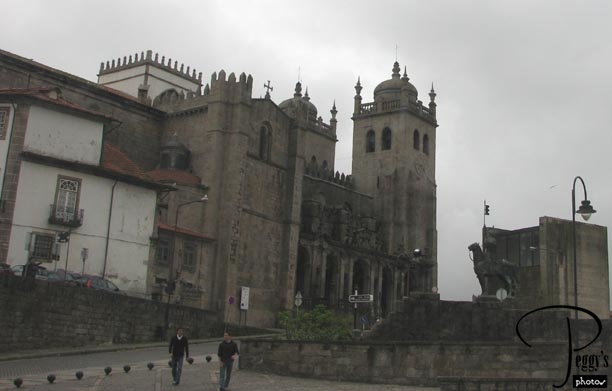
The 12th–century Romanesque Se church.

Porto
Porto
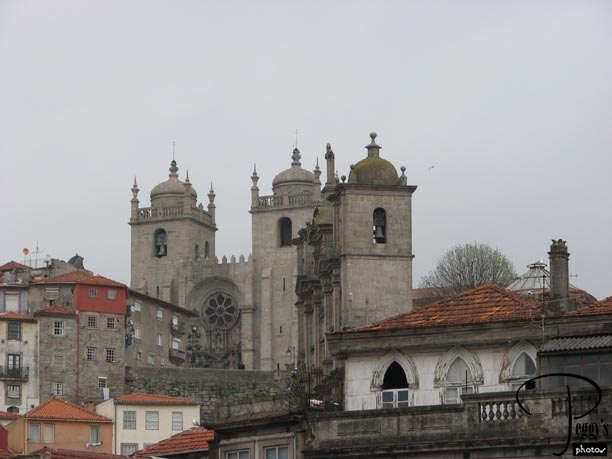
Front of the Se church.

Porto
Porto
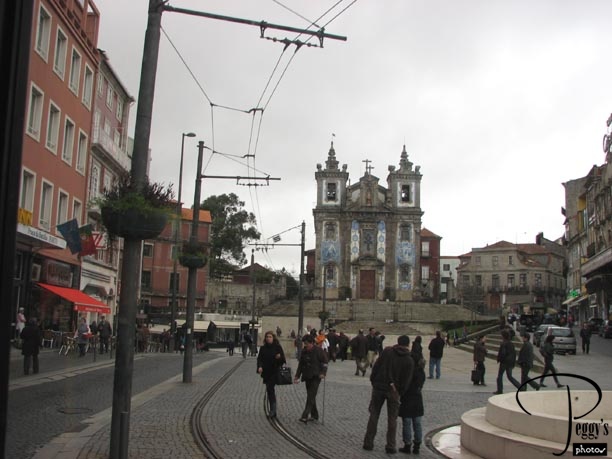
The Praca da Batalha (Battle Square) with the blue–tiled Igreja de Santo Ildefonso.

Porto
Porto
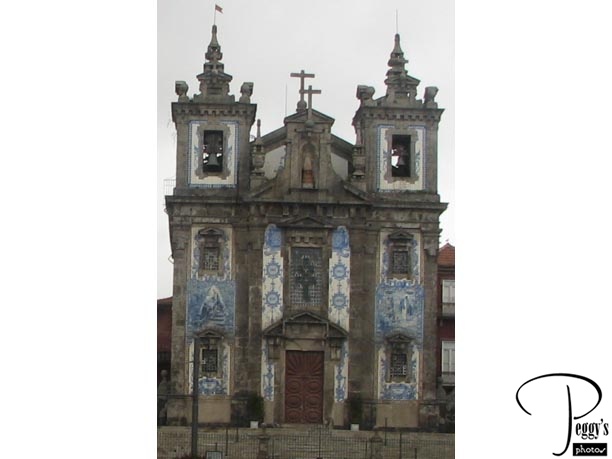
Close–up of the Igreja de Santo Ildefonso.

Porto
Porto
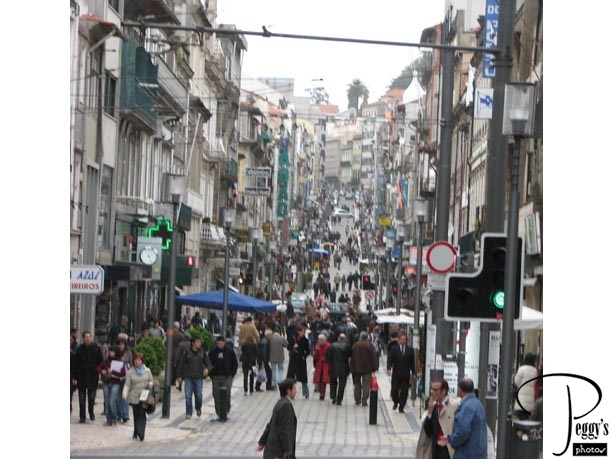
Rua Santa Catarina, Porto’s main shopping street. I think most of my tour group headed over here, some stopping at the Cafe Majestic which opened in 1921. Joanne Rowling is believed to have jotted notes for her Henry Potter books when sitting in this cafe. Nearby there is the Bolhao (market) selling food, flowers, produce, etc.

Porto
Porto
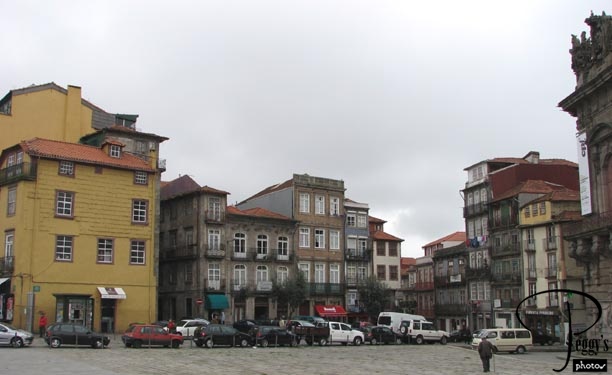
Street scene.

Porto
Porto
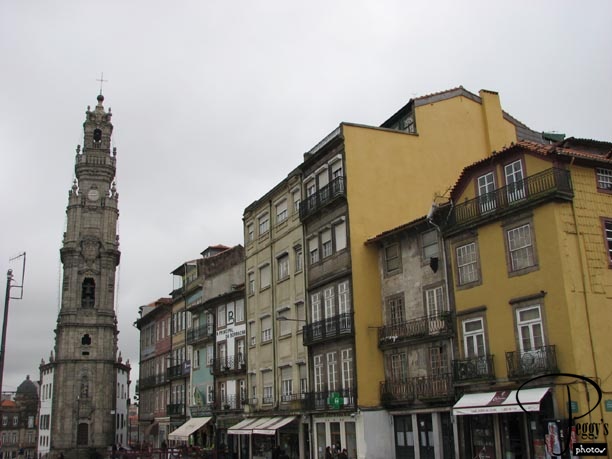
The Torre dos Clerigos, the tower of the Clerigos Church. The tower was designed by Nicolau Nasoni in six sections, each section more elaborate than the one before it. You can climb up 225 steps for a view of the city. You can also see this tower throughout the city.

Porto
Porto
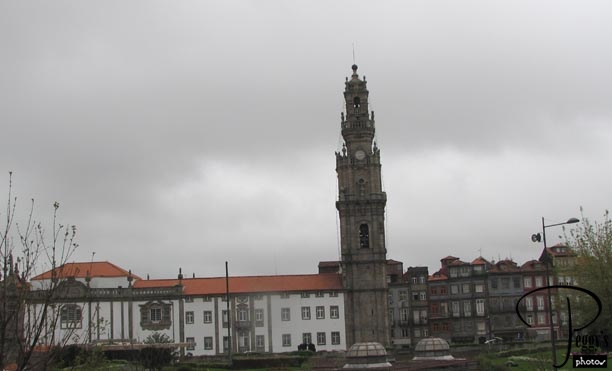
The Cleriogos Church with its oversized tower.

Porto
Porto
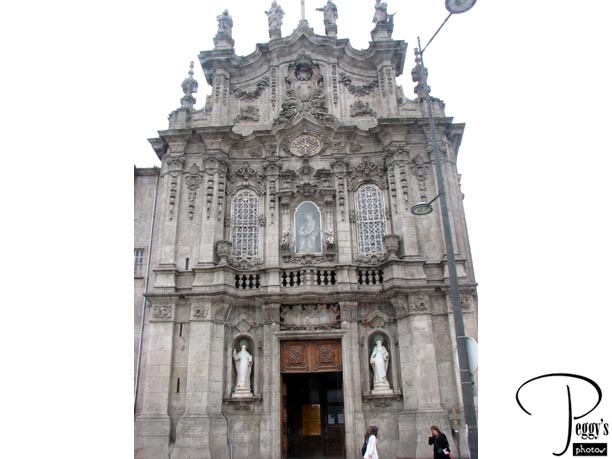
Another church, the Igreja do Carmo, built between 1750 and 1768.

Porto
Porto
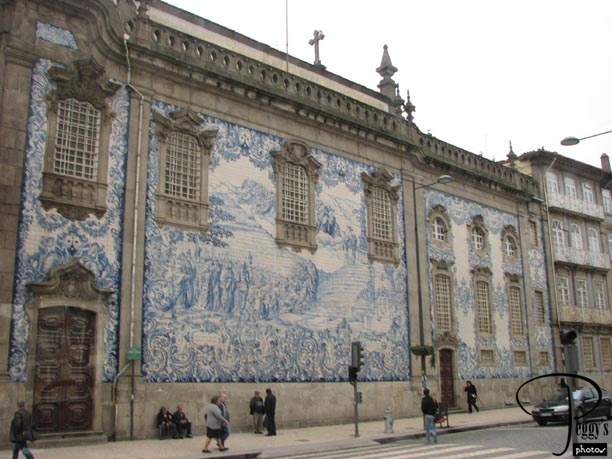
The tiled side of the church. The mural traces the legendary founding of the Carmelite Order.

Porto
Porto
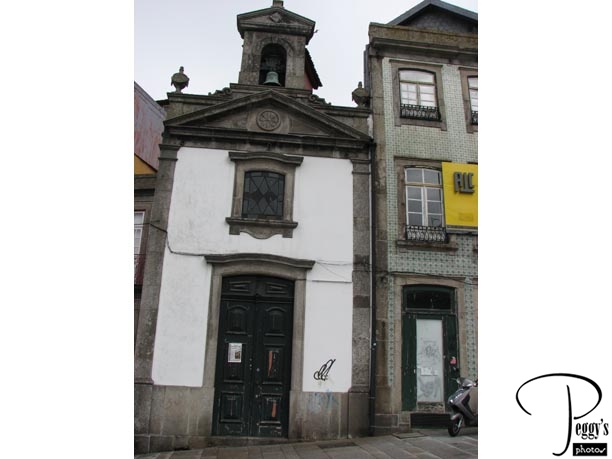
Another church seen from the bus.

Porto
Porto
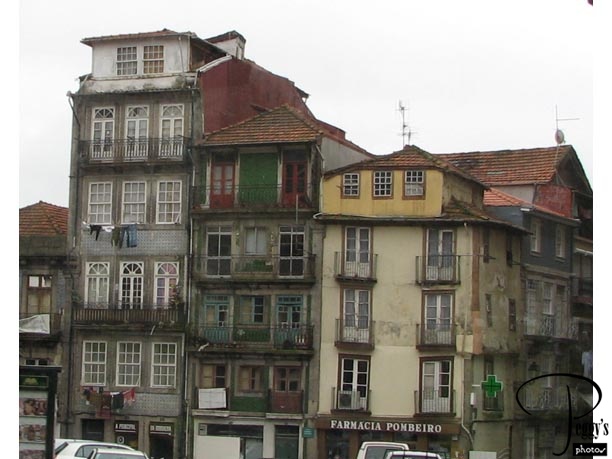
Some of Porto’s buildings. Very many of Porto’s buildings are in serious disrepair, with 40% of them unoccupied. One reason for their condition is Porto’s long–term rent control, with some residents’ rent not increased from the 2 euros a month they paid 50 years ago. There is now a government effort to fix up these buildings. Porto might look quite different in the coming years, but these old buildings still retain much charm.

Porto
Porto
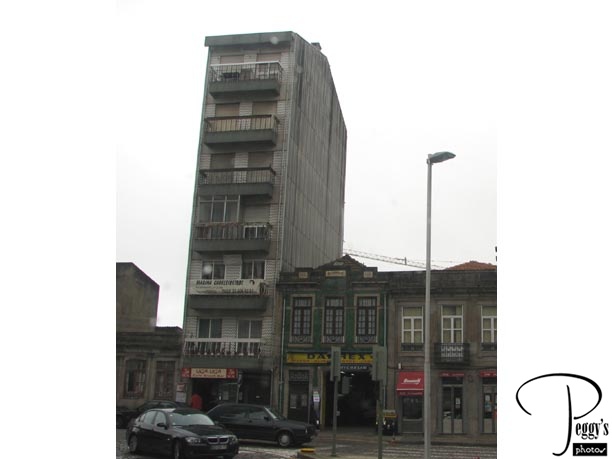
In Porto, you will see many buildings looking like these.

Porto
Porto
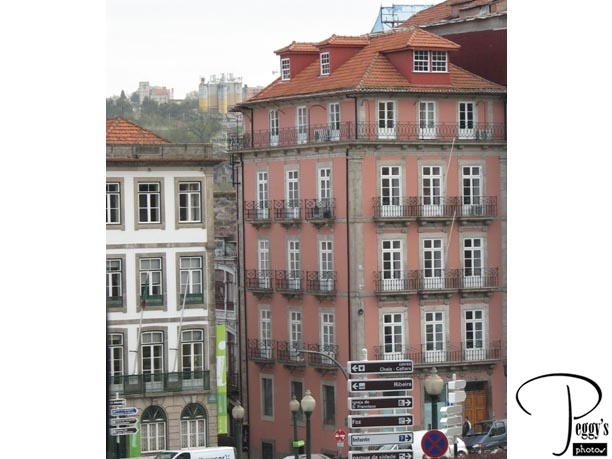
But you are also going to see buildings looking like these.

Porto
Porto
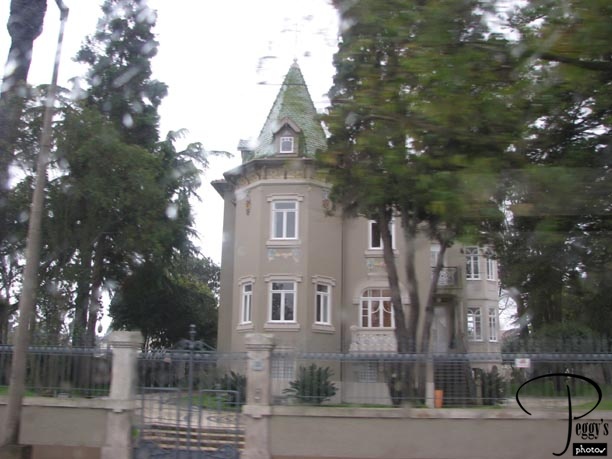
And this one.

Porto
Porto
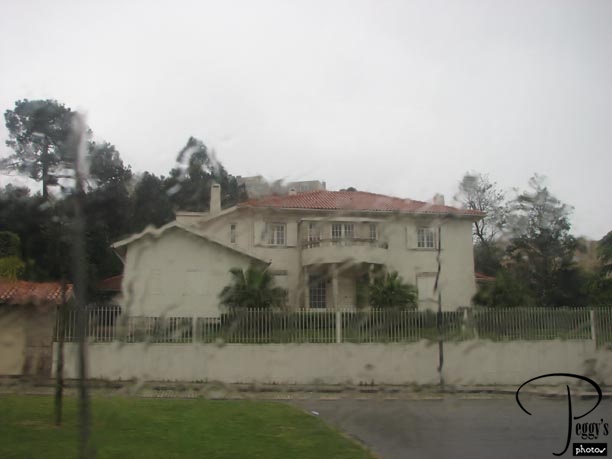
And this one. You can see from the photo that it has started to rain heavily, but I don’t think it rained for more than an hour.

Porto
Porto
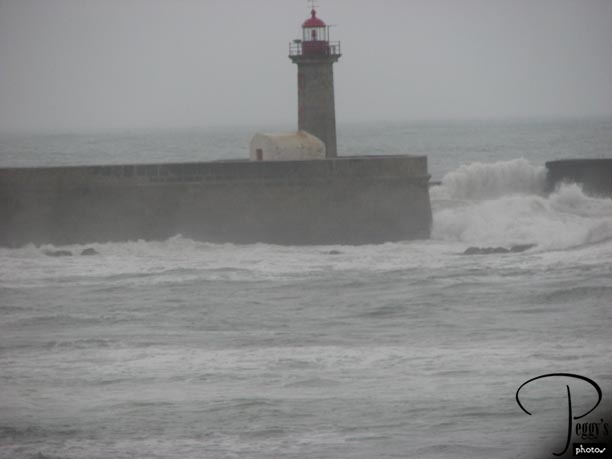
I was surprised when I saw the Atlantic Ocean from the bus, here quite rough.

Porto
Porto
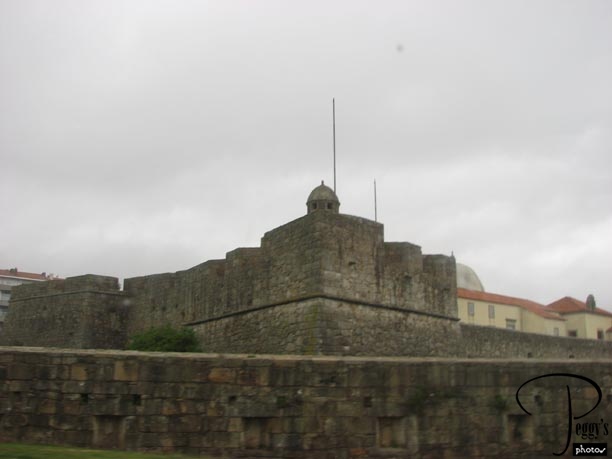
And an old fort on the ocean.

Porto
Porto
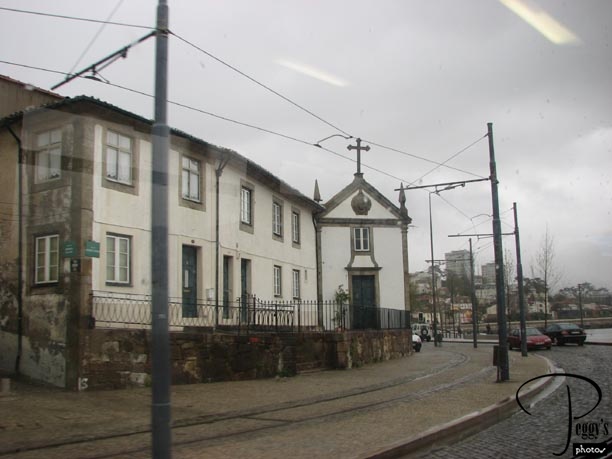
We made our way back to the center of Porto, seeing this church on the way. I took a taxi back to my hotel rather than wait for the hop–on hop–off bus to reach my hotel again as I wanted to have enough time to get ready for tonight’s adventure.

Porto
Vila Nova de Gaia
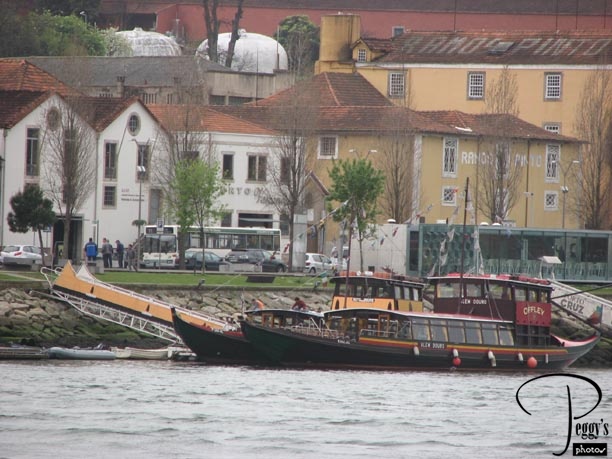
For this evening, Globus offered an optional cruise on the River Duoro followed by a special dinner. We drove over the bridge to Vila Nova de Gaia to near Sandeman’s. We took our cruise aboard the front boat (a rabelos). I have put the photos I took of our boat cruise on a slide show on this website: Go to Slide Shows, Western Europe, Portugal, “Porto: Cruise on River Duoro.” I took the photos from the cold, windy deck while my tour group spent most of the cruise nice and warm inside the cabin, but I enjoyed myself taking all my photos.

Vila Nova de Gaia
Vila Nova de Gaia
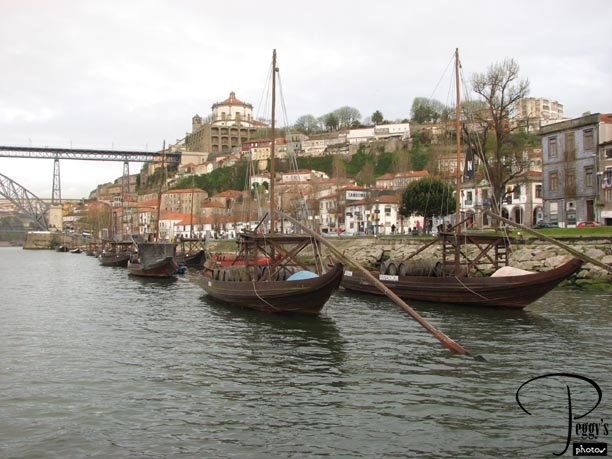
One of the first sights that we passed on the cruise was these rabelos, the old port barrel boats.

Vila Nova de Gaia
Vila Nova de Gaia
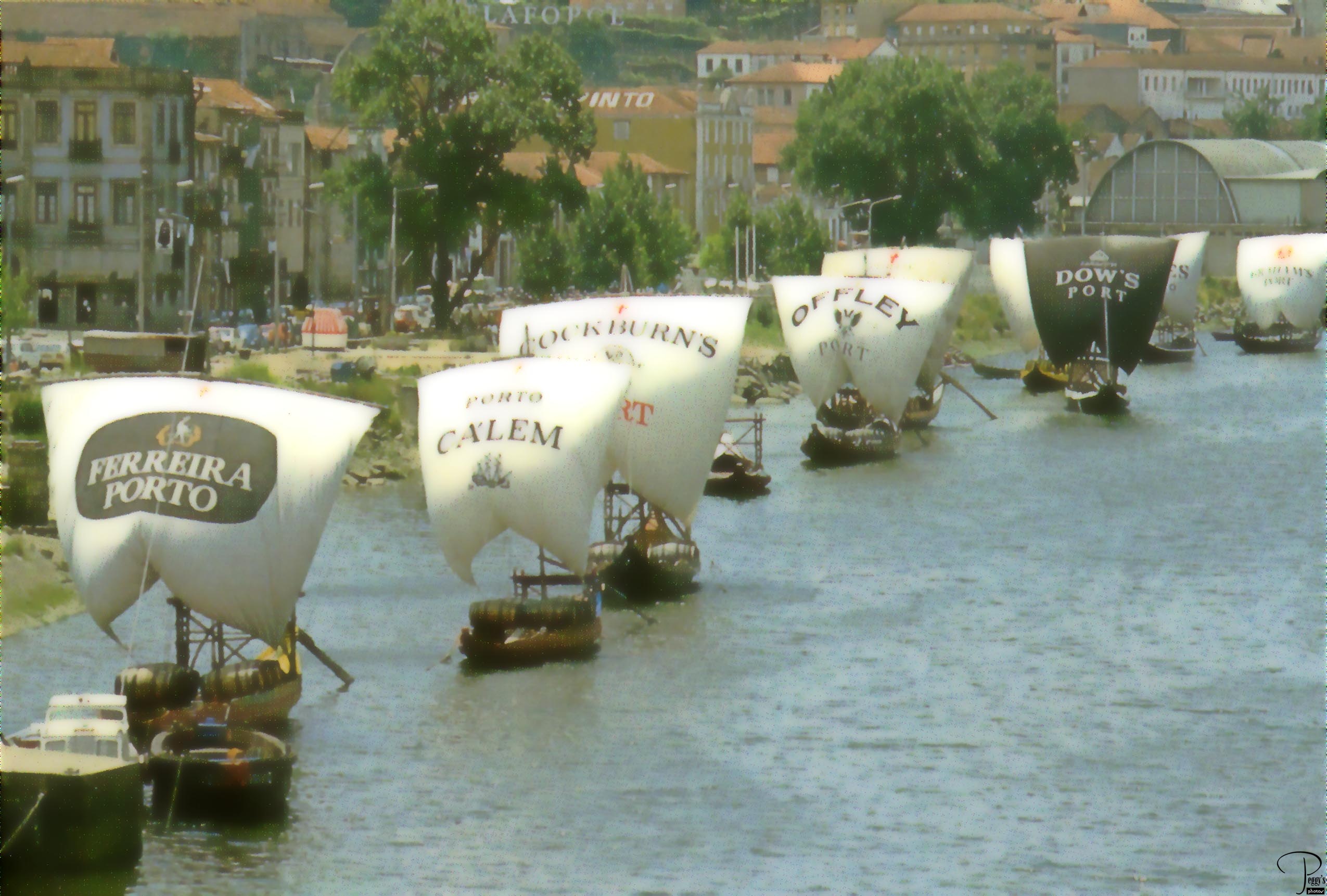
This is from a postcard of rabelos with their sails up, each with the insigna of a port winery.

Vila Nova de Gaia
Vila Nova de Gaia
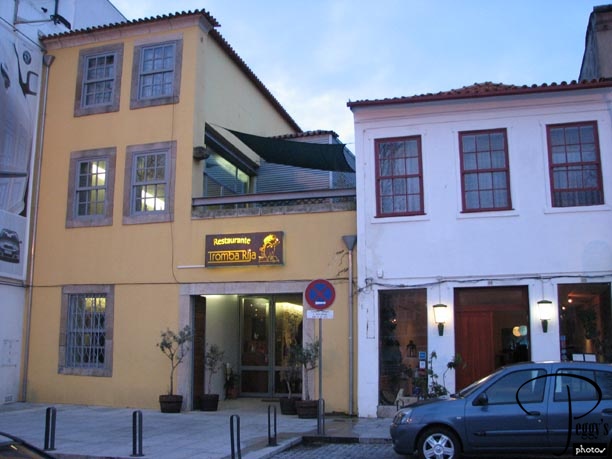
After the boat cruise, we had a buffet dinner at the Restaurante Tromba Rija.

Vila Nova de Gaia
Restaurante Tromba Rija
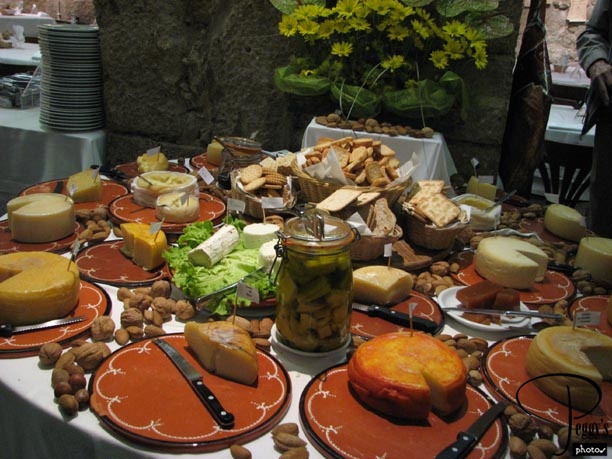
Rui, our Globus tour guide, promised us quite a meal. The cheese and cracker table.

Restaurante Tromba Rija
Restaurante Tromba Rija
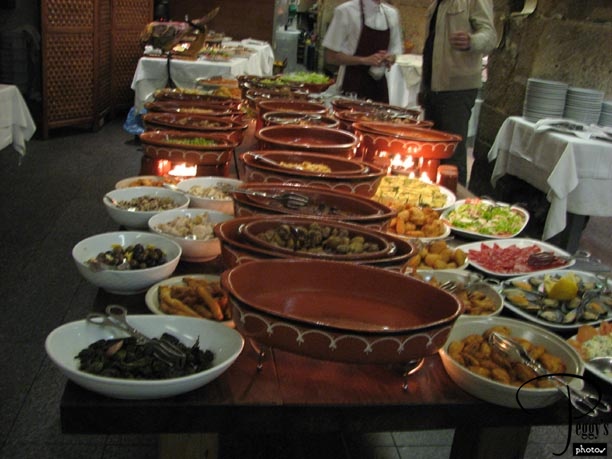
The salads and appetizers.

Restaurante Tromba Rija
Restaurante Tromba Rija
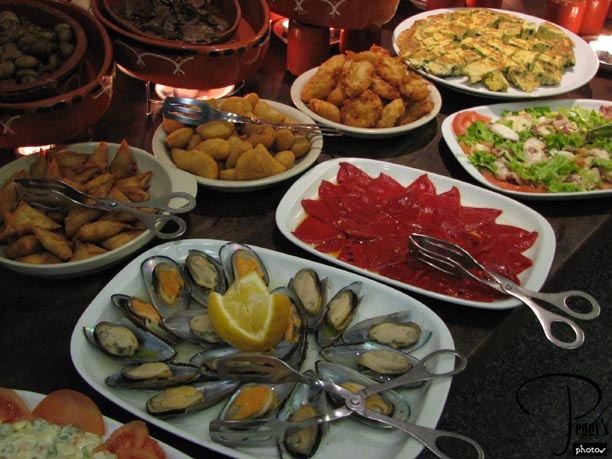
Rui told us what each dish was in case we didn’t recognize it. I remembered he told us there was chicken in one of those bowls, but I picked the wrong bowl and it was rabbit (I at first thought it was rather odd–tasting chicken––I was more careful picking food after that).

Restaurante Tromba Rija
Restaurante Tromba Rija
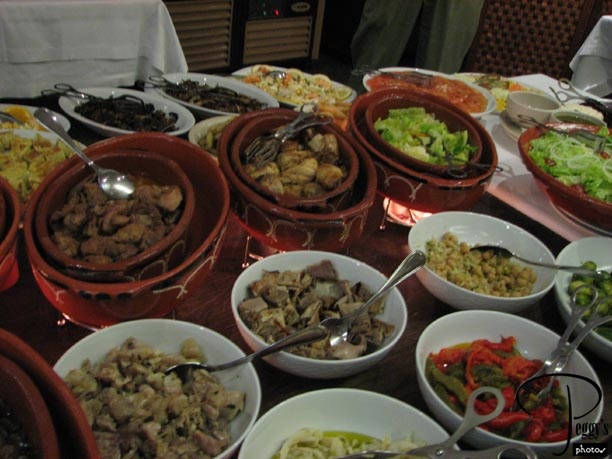
More food.

Restaurante Tromba Rija
Restaurante Tromba Rija
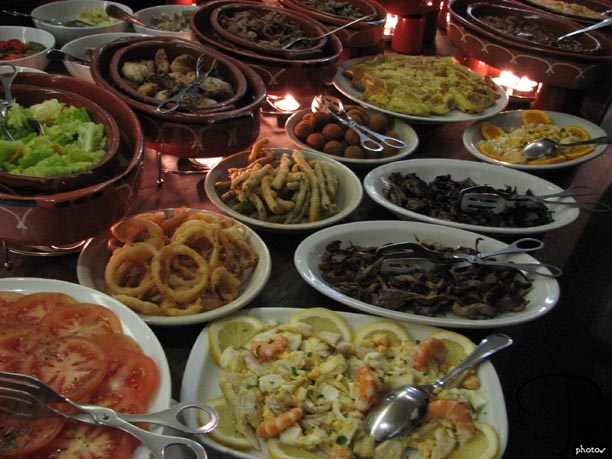
And more food.

Restaurante Tromba Rija
Restaurante Tromba Rija

And still more.

Restaurante Tromba Rija
Restaurante Tromba Rija
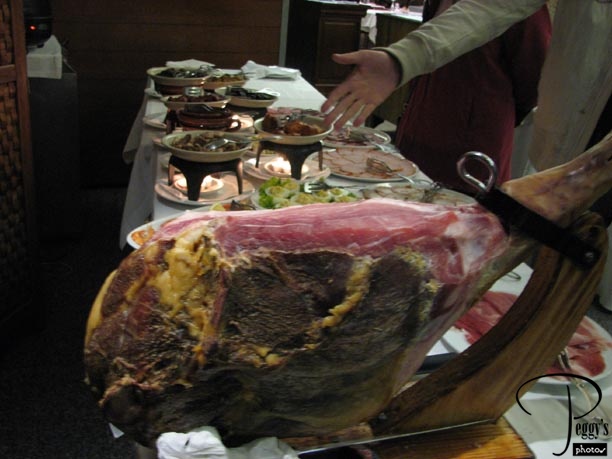
The meats. There was also a special cod dish made up singularly for each person. I didn’t have it but heard it was delicious.

Restaurante Tromba Rija
Restaurante Tromba Rija
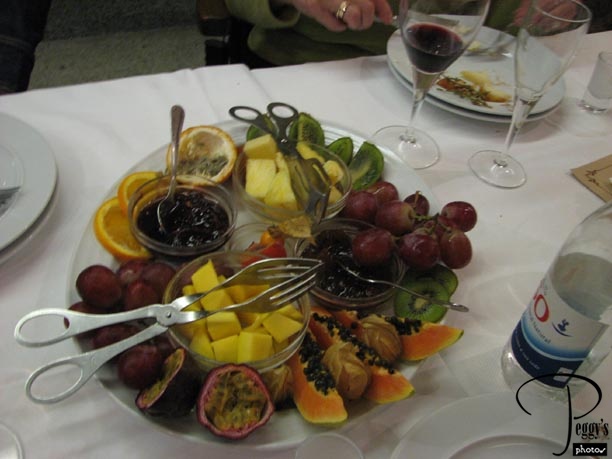
If we were still hungry, there was fruit and a bowl of nuts on the table.

Restaurante Tromba Rija
Restaurante Tromba Rija

And desert. Another tour group came in, and even though we were there way ahead of them, somehow they got to the desert table before us. The deserts were delicious, especially the rice pudding, which the Portuguese really know how to make.

Restaurante Tromba Rija
Restaurante Tromba Rija
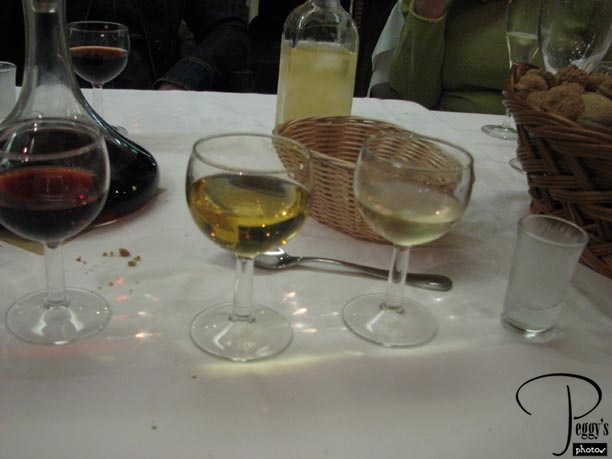
To wash this feast down, there was as much white, red, and green wine, port, grappa, and almond liquor with lemon that we could drink.

Restaurante Tromba Rija
Restaurante Tromba Rija
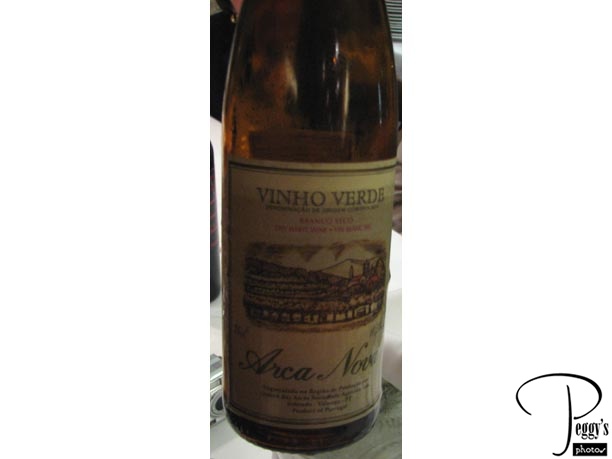
The green wine––vinho verde. It is from the Minho region and can be white or red.

Restaurante Tromba Rija
Restaurante Tromba Rija
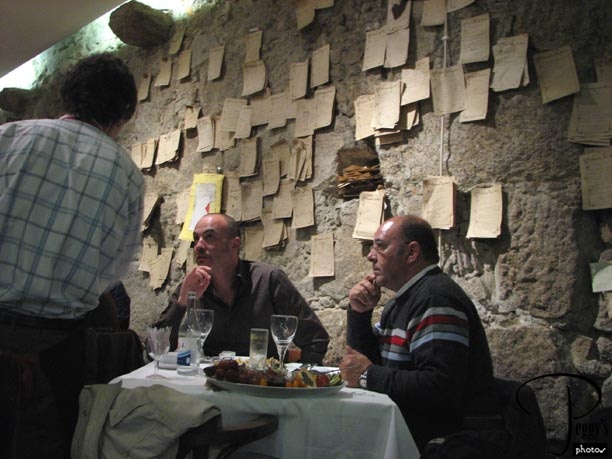
Center––Rui; to the right––Manuel, our driver, ready to help anyone needing it back on the bus, but even with all the included alcohol for consumption, no one overdrank. You can attach a note on the wall of your visit to the Restaurante Tromba Rija.
